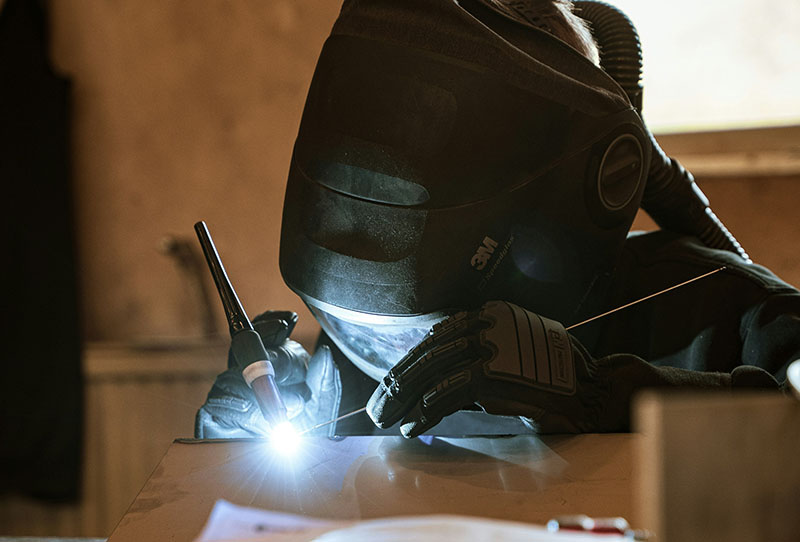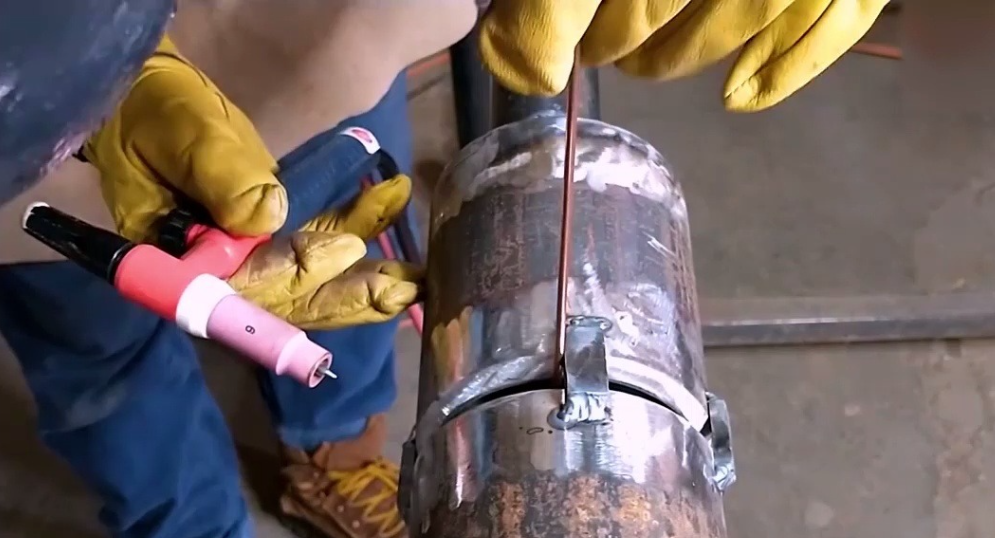- New Product
- Recommended Products

TS8000 Propane Torch 3 Types Brass Torch Tips
Adjustable Flame, Trigger Start Mapp Gas Torch With Self Ignition & Brass Knob
A Comprehensive TIG Welding Guide Instructions

Tig Welding, Or Tungsten Inert Gas Welding, Stands As A Pinnacle Of Precision And Control In The World Of Welding. This Sophisticated Welding Process Offers Unparalleled Accuracy And Quality, Making It A Preferred Choice For Welding Intricate Joints, Thin Materials, And Critical Components. In This Guide, We Will Explore The Functionality, Temperature Control, Operating Instructions, And Usage Precautions Of Tig Welding, Empowering Welders To Master This Precise And Versatile Welding Technique.
Understanding the Functionality of TIG Welding:
TIG welding utilizes a non-consumable tungsten electrode to create the welding arc, while an inert gas shield, typically argon or helium, protects the weld pool from atmospheric contamination. The welder manually feeds a filler rod into the weld pool, controlling the deposition of additional material as needed. This precise control over the welding arc and filler metal deposition allows for the creation of clean, high-quality welds with minimal spatter and distortion.

Temperature Control in TIG Welding:
One Of The Key Advantages Of Tig Welding Is Its Ability To Precisely Control Heat Input During The Welding Process. By Adjusting The Welding Current, Arc Length, And Travel Speed, Welders Can Fine-Tune The Temperature Of The Weld Pool To Achieve Optimal Penetration And Fusion Without Overheating The Base Material. The Maximum Temperature For Tig Welding Typically Ranges From 6,000 To 10,000 Degrees Fahrenheit (3,315 To 5,537 Degrees Celsius), Depending On The Material Being Welded And The Welding Parameters Used.
Operating Instructions for TIG Welding:
Equipment Setup: Begin By Assembling The Tig Welding Equipment, Including The Tig Welder, Gas Cylinder, Torch, Tungsten Electrode, Filler Rod, And Ppe (Personal Protective Equipment) Such As Welding Helmet, Gloves, And Protective Clothing.
Tungsten Preparation: Grind The Tungsten Electrode To A Sharp Point And Install It In The Tig Torch According To The Manufacturer's Specifications.
Gas Selection And Flow Rate: Choose The Appropriate Shielding Gas (Argon Or Helium) And Set The Flow Rate To Ensure Adequate Coverage Of The Weld Area.
Arc Starting: Use The High-Frequency Start Or Lift Arc Method To Initiate The Welding Arc, Ensuring A Stable Arc And Consistent Weld Pool Formation.
Welding Technique: Maintain A Consistent Arc Length, Travel Speed, And Torch Angle Throughout The Welding Process, Adjusting As Needed To Control Heat Input And Weld Bead Size.
Filler Metal Deposition: Feed The Filler Rod Into The Leading Edge Of The Weld Pool At A Controlled Rate, Ensuring Proper Fusion And Reinforcement Of The Weld Joint.
Cooling And Post-Weld Inspection: Allow The Welded Joint To Cool Naturally Or Use A Post-Weld Cooling Method To Prevent Rapid Cooling And Minimize Distortion. Inspect The Weld For Defects, Such As Porosity Or Lack Of Fusion, And Make Any Necessary Repairs Or Adjustments.
Usage Precautions for TIG Welding:
Safety Equipment: Always Wear Appropriate Ppe, Including A Welding Helmet With A Proper Shade Lens, Gloves, And Protective Clothing, To Protect Against Arc Flash, Uv Radiation, And Welding Sparks.
Ventilation: Ensure Adequate Ventilation In The Welding Area To Remove Welding Fumes And Prevent Exposure To Harmful Gases And Particulates.
Electrical Hazards: Avoid Contact With The Welding Electrode Or Workpiece When The Welding Circuit Is Energized To Prevent Electric Shock Or Burns.
Gas Cylinder Handling: Handle Gas Cylinders With Care, Ensuring They Are Properly Secured And Stored In An Upright Position To Prevent Leaks Or Accidents.
Fire Safety: Keep Flammable Materials And Combustible Substances Away From The Welding Area To Minimize The Risk Of Fire Or Explosion.
In Conclusion, Tig Welding Offers Precision, Control, And Quality Unmatched By Other Welding Processes. By Understanding The Functionality, Temperature Control, Operating Instructions, And Usage Precautions Of Tig Welding, Welders Can Achieve Superior Weld Quality And Consistency While Ensuring Their Safety And The Safety Of Others. With Practice And Attention To Detail, Mastering Tig Welding Opens The Door To A World Of Possibilities In Fabrication, Manufacturing, And Craftsmanship.



